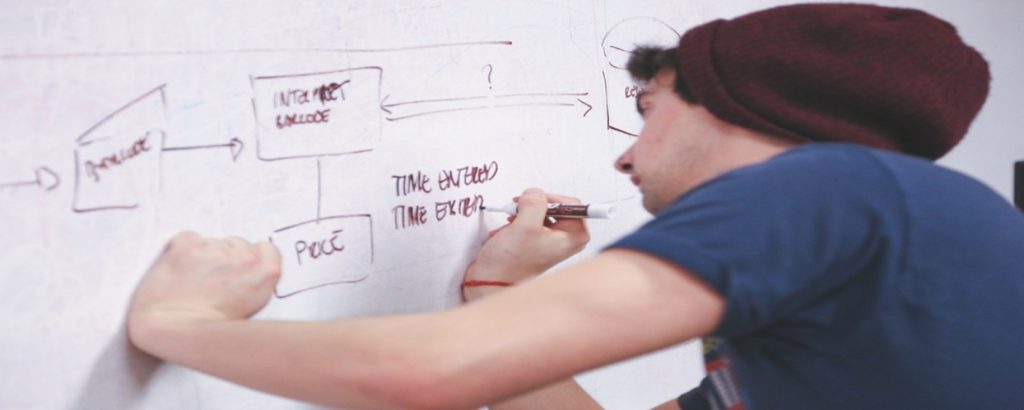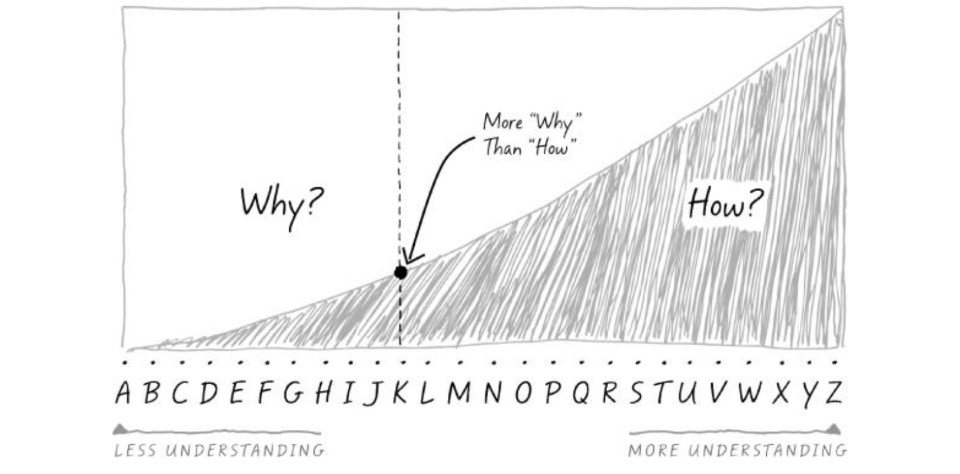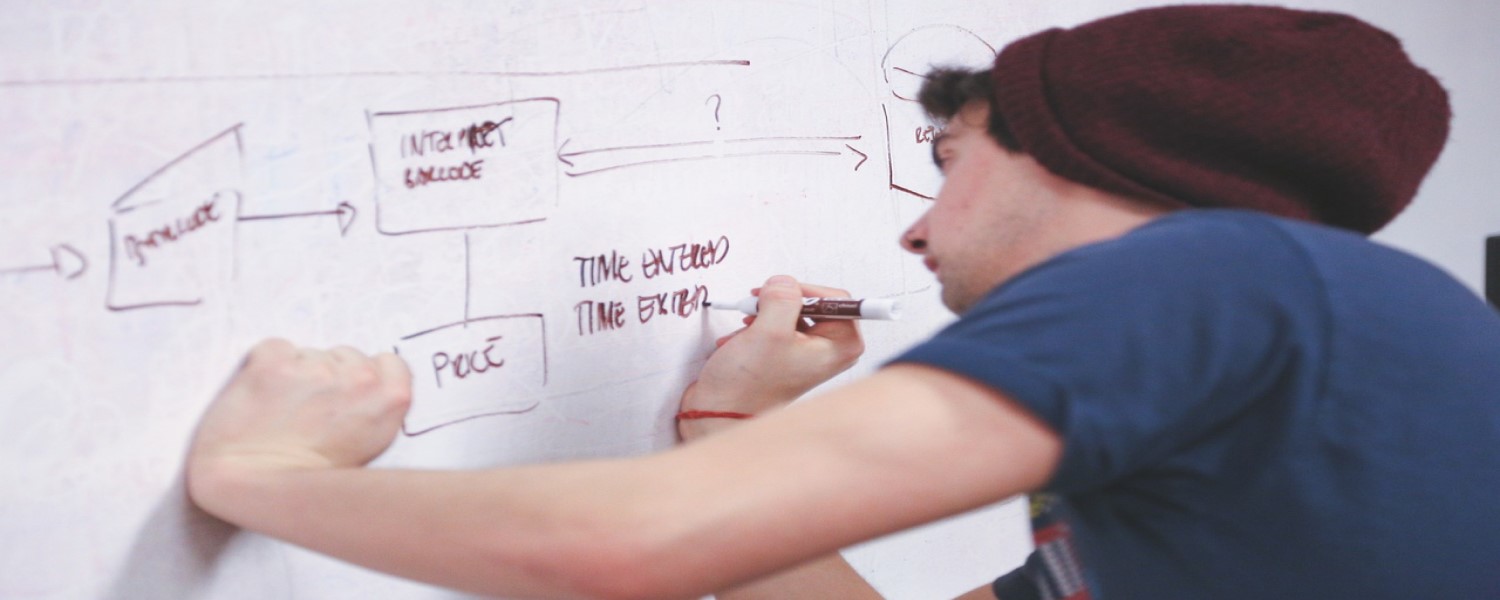This is How to Explain Things Better to Others
It was a hot summer day last year and I just had a couple more emails to send. Then I could head out to dinner with my Uncle Albert who was in town visiting. While I was typing furiously on my laptop, he was on my couch enjoying a cold beer and watching TV. I could sense he was getting a little ‘hangry’ because he asked what I was doing and how much longer until we could go eat.
“I’m just sending out a few emails, and I’m almost done!” I replied.
“What’s the hell is an email?” he asked.
You are probably wondering if he had been living in a cave for the last 25 years to not know what an email was, and I assure you he most certainly has not…
But you are close!
You see, my Uncle Albert had been trapped in an igloo in Northern Canada for the past 25 years. Please don’t ask why!
So, when he asked that question, it made me realize that he had no idea what email is. Geez, now I would need to figure out how to explain email to him
Lucky for me, I had just finished reading a great book about how to explain things better called The Art of Explanation: Making Your Ideas, Products, and Services Easier to Understand by Lee LeFever, so I was up for the challenge!
Before we get to how I explained email to my Uncle Albert, let’s first look at some tips on how to explain things better.
And let’s start by first looking at the big picture by answering the question…
What is an explanation?
An explanation is simply a way to describe facts that makes them more understandable by others.
The intended goal of an explanation is to improve or increase the understanding of certain facts.
Great explainers are able to put themselves in the audience’s shoes and communicate from their perspective to make them see and understand things.
A good explanation packages facts into a form that makes them simpler to understand and then apply.

Why is Explanation Important?
Whether you are selling a product, an idea, or a vision, the fact of the matter is that if you don’t know how to explain it properly the other person won’t buy it!
As LeFever says, knowing how to explain things better is a skill that we can all learn to master, and it can help bring ideas to life. By knowing how to explain things better it will make people care about what we are talking about which will hopefully cause them to want to know more.
Great explanations also lower the cost of understanding. In other words, if something is too complicated, often times people will just give up because the time required to figure it out isn’t worth it. So, by knowing how to explain things better you can reduce the cost to others of figuring it out which makes them more likely to buy what you are selling.
Why Do Many Explanations Fail?
LeFever has a name for things not being adopted due to a lack of understanding:
“We came to call this an explanation problem, which is when the biggest barrier to adoption is not design, features, or benefits but communication. And the problem was epidemic. Thousands of life-changing tools and ideas were not being used because they lacked clear explanations of their value.” 1
If you are wondering about the most common reasons that explanations fail, there are several:
Lack of Confidence
Once you lose someone you often get a blank stare which means they have lost confidence in grasping what you are saying. From then on, they are just trying to get through your explanation instead of understanding it.
Bad Assumptions
When we know a subject well ourselves, we often assume the audience knows more than they do. LeFever calls this the ‘curse of knowledge’ meaning “when we know a subject very well, we have a difficult time imagining what it is like not to know it” 1
Language Issues
Using industry-specific words or jargon can cause our explanations to fail. This is due to the fact our audience has no idea what we mean, which lowers their confidence.
Not Understanding It Well Enough Ourselves
Lastly, thinking we know something more than we do can get us into trouble as well. As Einstein said: “If you can’t explain it simply, you don’t understand it well enough.”
LeFever created a really smart “explanation scale”, which is an A-Z continuum which can help us visualize and plan for how to explain things better
The Explanation Scale
The explanation scale looks like this:

In this case, the person is at ‘C’ on the scale and has a low understanding of the idea, our goal is to move them toward the right side.
On the other hand, those who have a good understanding would fall to the right as seen here:

When you think about any explanation you can relate it to the explanation scale and ask yourself the following questions are suggested by LeFever:
 Where do you fall on the scale related to a certain idea?
Where do you fall on the scale related to a certain idea?
 Where does your audience fall?
Where does your audience fall?
 What are you assuming in terms of their level of understanding?
What are you assuming in terms of their level of understanding?
 Do your current explanations account for everyone on the scale?
Do your current explanations account for everyone on the scale?
 Should they?
Should they?
Packaging Your Explanation – How to Explain Things Better
Now that you understand the explanation scale you need to present or package your ideas in a way that accounts for the audience’s needs.
There are several ways you can do this, and it all depends on where your audience falls on the scale. LeFever explains them as ‘stepping stones’ to take you from the left to the right side of the continuum.
Context
The idea is to start the explanation with a few declarative statements to get the audience to agree with you to increase their confidence that the explanation is headed in a direction they can understand – to give them ‘context’. You want to answer the ‘why?’ as in ‘why should I care?’.
As LeFever says, “context moves the points we have agreed upon into a specific place. It gives the audience a foundation for the explanation and lets them know why it should matter to them.” 1
Another way to understand context is that it specifies the ‘why’ of explanations which is important for those who fall on the low end of the scale, the ‘how’ comes later as someone moves to the right of the scale or someone who has a greater understanding:

Stories
Stories have been used forever in explanations and can really help people understand and remember things better. There are times when stories are not appropriate due to the subject being explained, and the amount of time available amongst other factors. However, there are cases where it is effective to establish context, then tell a story.
Connections
Connections build on things people already understand to help explain something rather than starting from scratch. For example, you can explain Groupon using the concept of coupons. If someone understands A, they will understand B, and this is why
Descriptions
While the first three elements (context, stories, and connections) are more appropriate for explaining the ‘why’ of an idea, sometimes people either begin or end up on the right side of the continuum where the ‘how’ of an idea becomes important. This is where the last stepping stone or the good old-fashioned description comes in. Descriptions focus more on the ‘how’ rather than the ‘why’.
Conclusion
The last stepping stone is the conclusion which simply wraps up the package, puts a bow on it and summarizes what we discussed.
How to Explain Things Better is More of an Art Than Anything
If we look at the continuum and stepping stones below, according to LeFever: “It is difficult—near impossible, in fact—to draw a line that marks exactly where an explanation begins and ends. Even the most tactical instructions could be an explanation if they make an idea easier to understand. The questions simply move from “Why should I care about this?” to “How can I use this?” 1

One More Key for How to Explain Things Better – Keep it Simple!
Keep it simple! The idea being is to take that big, complex, bunch of details and turn them into one big understandable concept that is a stepping stone to future comprehension.
You can do this by not assuming what people know, using the most simple language possible, taking a step back and looking at things from the biggest picture possible, skipping the details and focusing on the big ideas, swapping accuracy for understanding and connecting the general ideas to stuff the audience already understands.
Back to My Uncle Albert
Being in that igloo for 25 years he had missed out on the advent of email. This was a bit tough for me to relate to because everyone I know understands what email is. So, I needed to be careful with my explanation. I realized that while I am on the far right of the continuum, he was on the far left. This meant I would need to start ‘big picture’ and try to connect the concept of email with something he already understood.
Then it hit me, snail mail! He obviously understood the concept of snail mail, so I explained that email is just like sending letters in the mail but on a computer instead! He completely understood which lead to a bunch of other questions.
Just then a commercial for Viagra came on the T.V. He quickly turned to me with a puzzled look on his face, but before he was able to say anything…
I woke up!
No explanation was necessary! Phew!
Until next time, keep explaining things better, keep dreamin’, and as always…PYMFP!
–Rick
P.S. Wanna know more? Check out the entire book.
Use it or Lose It
A few of the strategies or ‘stepping stones’ we can use for how to explain things better include:
 Context – give them context to answer “why should I care?”
Context – give them context to answer “why should I care?”
 Stories – utilize stories when appropriate to help them understand/remember things better.
Stories – utilize stories when appropriate to help them understand/remember things better.
 Connections – build on concepts they already understand.
Connections – build on concepts they already understand.
 Descriptions – give more details when they need the ‘how’.
Descriptions – give more details when they need the ‘how’.
 Conclusions – wrap it up, summarize and put a bow on it!
Conclusions – wrap it up, summarize and put a bow on it!
 K.I.S.S. – keep it simple!
K.I.S.S. – keep it simple!
How to Use It
Use these strategies when you need to know how to explain things better.
What Do You Think
Have you used any of these strategies for how to explain things better? Do you think you will use any of them? Do you have any other strategies for how to explain things better? Please share your thoughts in the comments below!
If you enjoyed this post, it would mean the world to us if you shared it with people you care about via any of the social media platforms below!
Popular Previous Posts:
Relationship Management: This is How to Build Better Bonds
Social Awareness: How to Be Aware of Others’ Emotions!
Self-Management: How to Take Control of Your Emotions
Self-Awareness: This is How to Be More Self-Aware!
EQ vs. IQ: This is How to Improve Your Emotional Intelligence
References
1 The Art of Explanation: Making Your Ideas, Products, and Services Easier to Understand by Lee LeFever


Good ideas. I always found that you have to assume the audience knows little about the subject being taught. The audience usually has a variety of learners that absorb knowledge in various ways( I.e visual learners etc. ). By simplifying the topic , as you said, and starting at the base ( bottom up) usually works for all. If applicable, using related diagrams or stories often helps to maintain interest and solidify information. Thanks Rick
Hi Eileen, Yeah I agree and if they do know something about the topic you will just be reinforcing what they do know. Stories is a big one, people love stories and they help release dopamine which helps with retention and memory. Thanks and be good, Rick